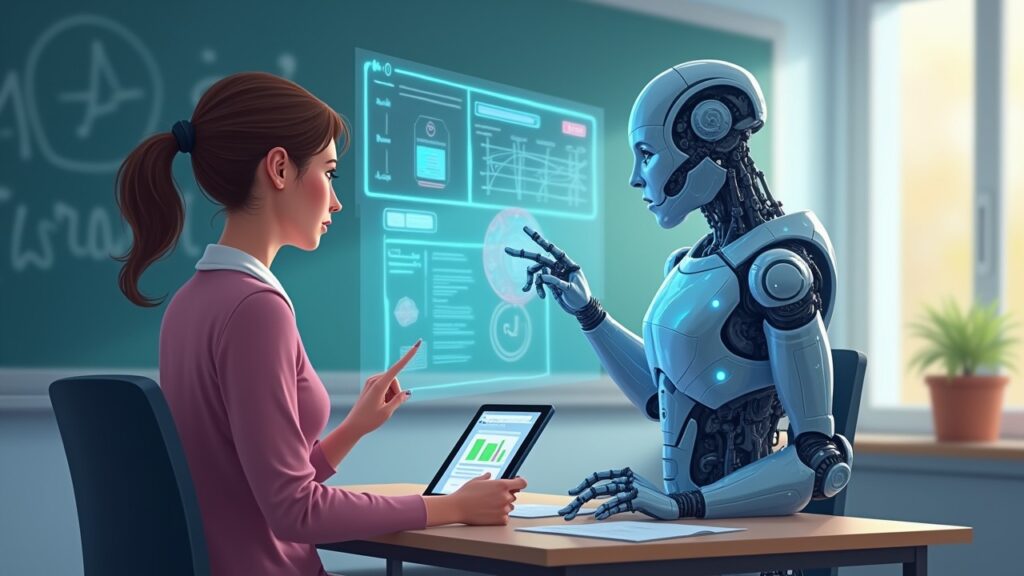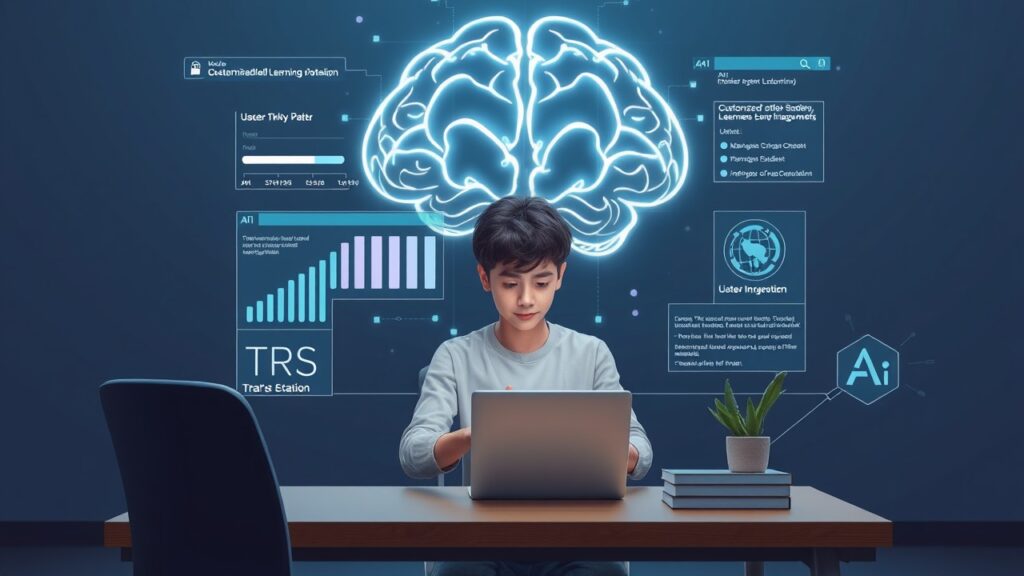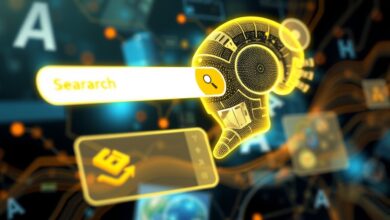Artificial Intelligence in Education: the Future of Teaching and Learning

Setting the Stage for AI in Education
The rapid advancements in artificial intelligence (AI) have already begun to reshape the educational landscape. From personalized learning experiences to AI-powered administrative support, the role of artificial intelligence in education is growing with every passing year. Experts predict that AI in education will soon become indispensable, opening new possibilities for both students and educators.
Quote: “By 2030, artificial intelligence in education is expected to become a $25 billion industry, fundamentally altering how education is delivered worldwide.” – Market Research Future
Benefits of Artificial Intelligence in Education
AI brings a wealth of benefits to the educational system, addressing both longstanding challenges and creating new opportunities for learning.
a. Personalized Learning Experiences
One of the greatest advantages of AI in education is its ability to offer personalized learning experiences. AI algorithms analyze student data to identify individual learning styles, strengths, and weaknesses, adapting content and pacing to meet each student’s needs.
- Statistics: According to a report by HolonIQ, adaptive learning powered by AI can lead to a 15% increase in student engagement and performance.
- Examples: Companies like Knewton and DreamBox Learning use AI-driven adaptive technology to provide customized learning paths.
b. Enhanced Efficiency for Teachers
AI technologies can automate administrative tasks like grading, attendance tracking, and even scheduling, allowing educators to focus more on teaching and less on paperwork. The role of educational technology here serves not only to reduce burnout among teachers but also to create a more productive learning environment.
- Supporting Stat: A survey by EdTechXGlobal indicates that teachers spend up to 30% of their time on non-teaching activities, which AI could significantly reduce.
c. Data-Driven Insights and Real-Time Feedback
AI can offer data-driven insights into student progress, helping teachers identify students who may need additional support.
Quote: “Artificial intelligence enables educators to focus on real-time progress and engagement, a feature previously impossible at scale.” – EdTech Digest

Key AI Innovations Transforming the Classroom
a. AI-Powered Tutors and Virtual Teaching Assistants
AI-powered tutors and virtual assistants, like IBM’s Watson Tutor, provide 24/7 learning support, offering explanations, answering questions, and guiding students through complex material. These tutors assist in alleviating the burden on teachers while offering continuous support to students.
b. Intelligent Content Creation
Intelligent content creation, such as smart textbooks, customized assessments, and interactive learning materials, can adapt to a student’s learning path.
- Example: Content generated by platforms like Squirrel AI adapts to students’ skill levels and comprehension rates.
c. Virtual Reality and Augmented Reality in Learning
VR and AR technologies powered by AI can create immersive, interactive experiences. These tools allow students to engage with subjects like history, science, and engineering in ways that were not possible with traditional teaching methods.
- Supporting Stat: A recent study by PwC found that students trained with VR learn 4x faster than in a traditional classroom.
The Drawbacks of AI in Education
While the benefits are substantial, AI in education also comes with its set of challenges and drawbacks.
a. Privacy Concerns and Data Security
AI systems require significant amounts of data to function effectively, which raises concerns about student privacy and data security.
- Statistic: A 2023 study by the Education Privacy Coalition found that 55% of parents are concerned about how AI companies collect and use student data.
b. Dependency on Technology
Excessive reliance on AI in teaching could lead to a loss of human touch in education. Critics argue that AI could make learning too transactional, with students missing out on the social and emotional aspects of the classroom environment.
c. Accessibility and Equity Issues
There’s a risk that only well-funded schools and students with access to technology can benefit from AI, widening the educational divide.
Quote: “AI in education should enhance learning, not widen the gap. Equity and accessibility must remain central to its implementation.” – UNESCO Education Report
The Future of Teaching and Learning with AI: Insights and Recommendations
a. Predictive Analytics and Early Intervention
With predictive analytics, AI can help identify at-risk students earlier, allowing for timely interventions. Such technology can be used to flag students struggling with attendance, academic performance, or social issues, giving educators a proactive tool to assist before challenges escalate.
b. AI-Driven Career Counseling
AI-powered career guidance systems can analyze student performance, interests, and aptitudes to offer personalized career advice.
- Example: The AI career advisor developed by IBM Watson provides students with tailored career recommendations based on personal interests and industry demands.
c. AI in Special Education
AI applications such as speech recognition and text-to-speech software can greatly aid students with disabilities, making educational resources more accessible.
Quote: “AI holds the potential to create inclusive classrooms where every student’s needs are met.” – National Center for Learning Disabilities
Future of AI in the US Education System: What Difference Will It Bring?

The United States education system stands to gain significantly from AI integration. However, for AI to truly make a difference, several considerations must be addressed.
a. Government Policies and Funding
The role of government policies will be crucial in setting standards for AI in education, addressing issues of privacy, equity, and accessibility.
- Example: The U.S. Department of Education recently proposed guidelines to establish ethical AI practices in schools.
b. Collaborative AI-Teacher Model
Instead of replacing teachers, AI should be positioned as a tool to assist and enhance traditional teaching methods, ensuring that the human element of education remains intact.
- Statistic: A 2024 survey by Gallup found that 65% of teachers believe AI will positively impact their classrooms if used as a supplement rather than a replacement.
Real-World Case Studies: Successful AI Integration in Schools
a. The Example of China’s Smart Classrooms
China has pioneered the use of AI in “smart classrooms,” which incorporate facial recognition and learning analytics to monitor student engagement.
b. Finland’s Experiment with AI Curriculum
Finland has introduced an AI curriculum that teaches students about the basics of AI, preparing them for an AI-driven world from a young age.
c. AI in U.S. Community Colleges
Some community colleges in the United States are using AI-powered tutoring systems to support non-traditional students, offering around-the-clock support to fit their schedules.
Conclusion: the Future with AI in Education
Artificial intelligence has the power to redefine the future of education by offering personalized learning, supporting educators, and preparing students for a technology-rich world. However, to maximize these benefits, stakeholders must address the challenges, such as data privacy, equity, and ethical considerations. The future of teaching and learning with AI will ultimately depend on balanced, thoughtful integration that places human needs at the center.
Final Quote: “The future of education lies in a partnership between humans and AI, ensuring that technology serves to enrich and elevate the learning experience for all.” – International Society for Technology in Education
Good Reads: iOS Augmented Reality Apps



3 Comments